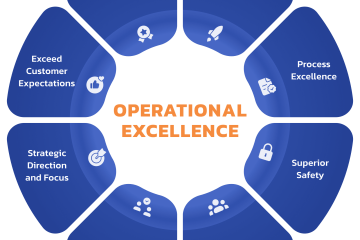Optimizing users’ experience is one of the most essential web development and design practices. Despite how vital it is to implement UX optimization in your business, not all brands and organizations can afford to invest their budget in user experience improvements. If you are in a similar position but still want to enhance UX, spending as little money as possible, you have come to the right place.
For this post, a successful web design company in Chicago provided us with some of the most effective UX strategies that don’t require an excessive budget to put into practice. Continue reading to learn how your business can improve its user experience on a budget!
Conducting Cheap User Research
User research is one of the first steps you need to take before conducting the UX optimization process. The good news is UX research doesn’t have to be expensive.
- Online Surveys: If you want to gather information about your target audience but are short on budget, you should try conducting online surveys. Consider using various platforms to create and distribute these surveys to your audience. With this strategy, you can gather valuable insights into your target audience’s interests, preferences, and pain points.
- User Testing: You can always ask friends and family members to be your test users for user testing. They might not be the best representation of your target audience, but the information they receive will still be helpful in identifying issues and problems with your services.
- Free Analytic Tools: You can always try out free analytic tools (the best examples are Google Analytics and Hotjar). Such tools can monitor user behavior on your website and provide valuable information regarding your audience’s habits. These tools are ideal for noticing serious issues and areas where improvement is needed, so don’t hesitate to implement them in your UX optimization practices.
Work on the Most Necessary UX Enhancement First
Even if you don’t have an unlimited budget, you can still make a significant impact by prioritizing the right UX improvements. First, you should use data and user feedback to identify the most critical areas of your website or app that need immediate refinement. If you focus your resources on these critical areas, you will have a much greater impact on the overall UX of your site and will save a significant amount of money.
Also, some UX improvements can be relatively simple, cheap, and don’t consume much time to implement. They are called “quick wins,” you should consider implementing them first to notice multiple minor UX improvements without incurring many expenses!
Lastly, remember to gather user feedback and continuously make additional improvements over time. This approach is often more cost-effective than attempting large-scale overhauls.
Implement Open-source Tools and Templates
The open-source community often offers vast resources that can help you optimize UX for very little to no money.
Some platforms, like WordPress, offer many free themes and plugins that can significantly improve your website’s user experience. Also, try to use open-source design templates available for various design software. These templates can be an excellent starting point for your design projects, so don’t hesitate to implement them in your practices.
Finally, you can adopt open-source collaborative design tools (like Figma) to streamline the design process with minimal costs.
Testing Usability on A Budget
Testing usability is one of the most vital steps toward finalizing any user experience process. With or without a significant budget, you can still successfully carry out the useability testing. You should start with remote usability testing and use tools made specifically for it, as they offer cheap ways to gather valuable information needed to upgrade your project.
Feedback widgets are another excellent tool you can implement. By implementing them on your project, you can allow users to provide feedback directly. This is a straightforward way of receiving feedback in real time. We recommend businesses consider implementing this tactic on their website or application.
Final Thoughts
Austin Web Design Optimizing UX doesn’t have to be a budget-eating process if you take this process strategically and calculate carefully. Take the right approach and follow these steps accordingly to ensure a successful user experience optimization process without losing a lot of your business budget.
Focus on areas that need fast improvement and use all the cost-friendly tools available on the market. You will be able to take your website user experience to the next level and boost user satisfaction.



